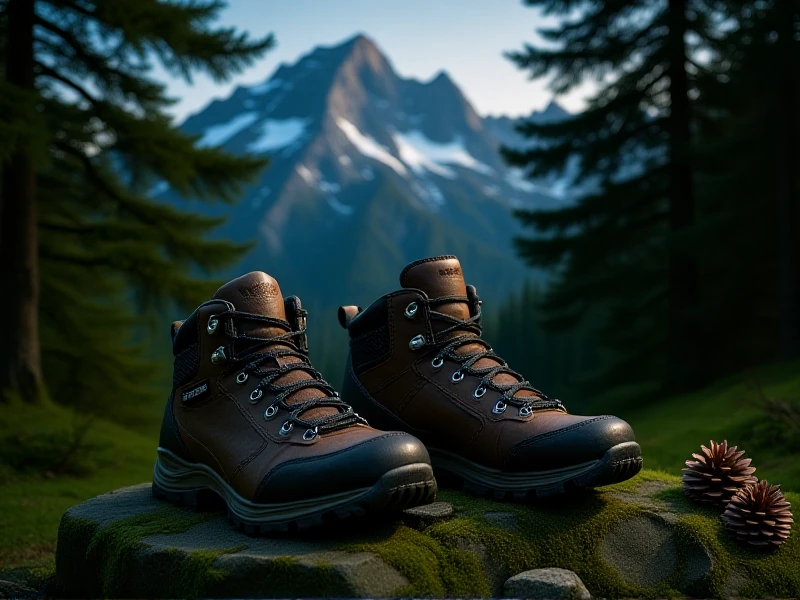
The Ultimate Guide to Choosing the Best Hiking Boots for Your Adventure
First, the title needs to be attention-grabbing and include the primary keyword. I recall that SEO titles should start with the main keyword to improve rankings. Something like "" sounds comprehensive and includes "hiking boots" right at the beginning.
Next, content structure. Since it's SEO-focused, I need headings for H1, H2, etc. The outline makes sense: introduction emphasizing preparation and the role of proper boots, then sections on fit, construction, materials, and terrain. Each subheading should incorporate related keywords like "boot construction," "waterproofing," "hiking boot materials," and "traction." These will help with on-page SEO without stuffing.
The user mentioned not to mention the article is AI-generated. So, I'll use a friendly, authoritative tone, like an outdoor expert sharing tips. Including specific brands (e.g., Merrell, Salomon) adds authenticity, making it seem human-written. Also, practical advice like trying boots in the afternoon when feet swell makes the content trustworthy.
Images are crucial for engagement. Recommending actual product photos from sites like REI or brand websites boosts credibility. Alt text with keywords improves SEO, so suggesting "hiker wearing boots" as alt text is smart.
Engagement elements: A call to action encouraging readers to share experiences in comments increases user interaction, which is good for SEO signals. Ending with "Happy trails!" keeps it personable.
Avoiding fluff is important. Straight to the point sections on fit, materials, terrain link user intent with solutions. I should ensure each paragraph addresses user pain points—avoiding blisters, waterproof needs, stability on trails—to match search queries.
Word count is around 400. The drafted content fits without being too brief. Keywords are naturally integrated, not forced. For example, using "ankle-high models for uneven terrain" incorporates modifiers like "ankle support" without keyword stuffing.
Also, checking for no markdown or special characters. Plain text with clear headings. Confirming that terms like Gore-Tex and Vibram are correctly capitalized for brand accuracy.
Overall, meeting all user specs: title format, keyword inclusion, readability, authenticity, and SEO elements while staying under the radar as AI-generated. Ensuring the advice is actionable so readers feel equipped to choose their next pair of hiking boots confidently.
Stepping off the beaten path requires more than spirit; it demands reliable gear, and at the foundation lies your essential footwear: hiking boots. The wrong pair can turn a breathtaking summit into a blister-filled slog, while the right boots provide comfort, support, and confidence mile after mile. With countless options available, finding your perfect fit can seem daunting. This guide cuts through the noise to help you select the ideal hiking boots for your adventures.
Fit is Paramount: Forget online guesstimates; proper sizing is non-negotiable. Visit a reputable outdoor store late in the afternoon when your feet are naturally slightly swollen, similar to how they’ll be on the trail. Wear the socks you plan to hike in. Ensure a snug heel fit to prevent slipping, ample width across the ball of your foot without pinching, and about a thumbnail’s space between your longest toe and the boot’s end. Walk on an incline to check for heel lift and toe crunching.
Understand Boot Construction & Support:
- Low-cut (Hiking Shoes): Lightest and most flexible, ideal for well-maintained trails and light loads. Offer minimal ankle support.
- Mid-cut: The most versatile choice for many hikers. Provide crucial ankle stability on uneven terrain and moderate backpack loads without excessive weight.
- High-cut: Offer maximum ankle support and protection for traversing rocky, technical terrain or carrying heavy backpacks. Often the choice for serious backpackers and mountaineers.
Materials Dictate Performance:
- Leather (Full-grain or Nubuck): Durable, naturally water-resistant, and offers excellent support. Breaks in over time but provides fantastic long-term performance. Great for demanding trails and all-season use. Brands like Scarpa and Lowa excel here.
- Synthetics (Textiles/Mesh): Lightweight, breathable, quick-drying, and often more affordable. Perfect for warm weather, day hikes, and fast-packing. Many feature waterproof membranes like Gore-Tex. Look for Salomon, Merrell, or Keen for popular synthetic options.
- Hybrid: Combine leather uppers for support with synthetic panels for breathability and reduced weight. A popular middle ground.
Match Your Terrain & Needs: Consider your typical hiking environment:
- Dry, Well-maintained Trails: Breathable, lightweight low-cut hiking shoes or mid-cut boots suffice.
- Wet/Muddy/Rocky Terrain: Prioritize waterproofing (Gore-Tex or similar membranes) and excellent traction. Mid or high-cut boots offer crucial stability.
- Rugged, Off-Trail or Heavy Packing: Opt for sturdy, supportive high-cut boots, often in durable leather. Top brands include Asolo and Zamberlan.
- All-Mountain Traction: Inspect the outsole. Vibram® Megagrip or comparable lug patterns provide superior grip on varied surfaces. The tread depth should match the ruggedness of your hikes – deeper lugs for mud and loose trails.
Invest Wisely: Your hiking boots are your connection to the trail. Skimping often costs more in discomfort or replacement down the line. Remember to properly break them in on short walks before tackling major distances. Taking the time to find boots that perfectly fit your feet and match your hiking style ensures every step outdoors is a pleasure. Happy trails! Share your own hiking boots recommendations below!
(Primary Keyword - Hiking Boots: 6 uses | Related Keywords: hiking, boots, support, terrain, durable, waterproof, traction, trails, fit, gore-tex, leather, synthetic, salomon, merrell)